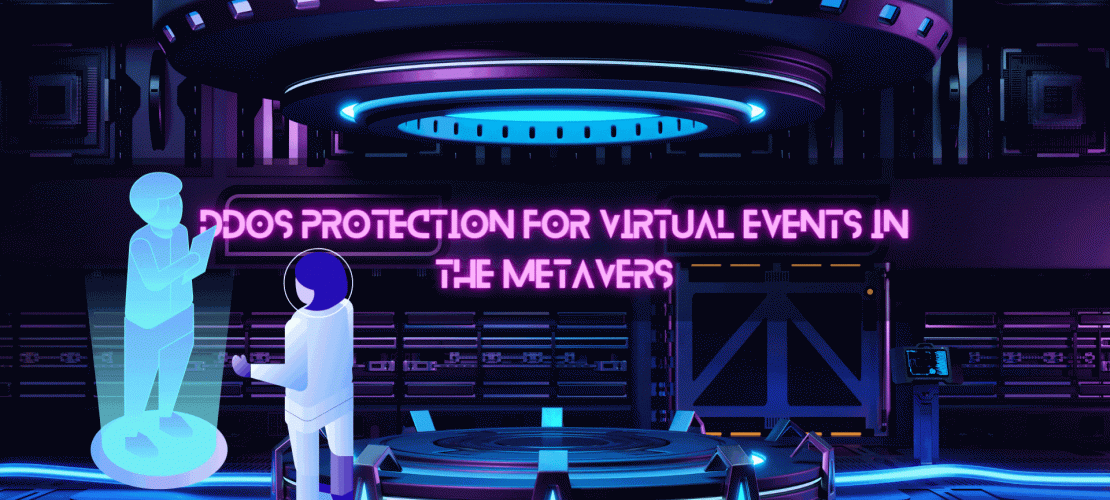The concept of the metaverse has gained immense popularity in recent years. It refers to a collective virtual shared space created by the convergence of physical and virtual reality. It is a virtual environment that allows users to interact with each other and explore new worlds without any physical constraints. With the emergence of the metaverse, virtual events have become a new way of communication and engagement. However, virtual events are not immune to cyber attacks, especially Distributed Denial of Service (DDoS) attacks. In this blog, we will discuss the importance of DDoS protection for virtual events in the metaverse and the strategies to protect them.
What is the Metaverse?
The metaverse is a collective virtual shared space created by the convergence of physical and virtual reality. It is a virtual environment that allows users to interact with each other and explore new worlds without any physical constraints. It is a network of virtual worlds and interconnected social spaces where users can interact with each other in real-time, using avatars or digital representations of themselves.
The metaverse has gained immense popularity due to its potential applications in various industries. Virtual events in the metaverse have become a new way of communication and engagement, especially in the wake of the COVID-19 pandemic. These events range from virtual conferences, music concerts, trade shows, and exhibitions to online gaming events.
The Importance of DDoS Protection for Virtual Events
Virtual events in the metaverse are not immune to cyber attacks, especially DDoS attacks. A DDoS attack can cause a virtual event to crash or slow down, resulting in loss of revenue, reputation, and customer trust. It can also disrupt communication and engagement, leading to a negative user experience.
DDoS attacks are one of the most common types of cyber attacks on virtual events. In a DDoS attack, the attacker floods the target network with a large number of requests or traffic to overwhelm the system, making it unavailable to legitimate users. DDoS attacks can be launched from multiple sources, making them difficult to mitigate.
DDoS Protection Strategies for Virtual Events in the Metaverse
DDoS protection for virtual events in the metaverse is essential to ensure the availability and reliability of the virtual event. The following are some DDoS protection strategies for virtual events in the metaverse:
- Cloud-based DDoS Protection Services:
Cloud-based DDoS protection services can provide the necessary protection against DDoS attacks for virtual events in the metaverse. These services can detect and mitigate DDoS attacks in real-time, ensuring the availability and reliability of the virtual event. - Content Delivery Networks (CDNs):
CDNs can be used to distribute the traffic of the virtual event across multiple servers, reducing the impact of DDoS attacks. CDNs can also provide additional security features such as SSL encryption, web application firewalls, and bot protection. - Scalable Infrastructure:
A scalable infrastructure can help virtual events in the metaverse withstand sudden spikes in traffic due to DDoS attacks. A scalable infrastructure can be achieved by using load balancers, auto-scaling, and serverless architectures. - Application Layer Protection:
Application layer protection can provide protection against application layer DDoS attacks, such as HTTP floods and Slowloris attacks. Application layer protection can be achieved by using web application firewalls and intrusion detection and prevention systems. - Incident Response Plan:
An incident response plan can help virtual event organizers respond quickly and effectively to a DDoS attack. The incident response plan should include procedures for detecting and mitigating a DDoS attack, as well as communication and notification procedures for stakeholders. - Multi-Factor Authentication (MFA)
Multi-factor authentication (MFA) is a security feature that requires users to provide multiple forms of identification in order to access a system or application. By implementing MFA for virtual events, you can ensure that only authorized users are able to participate, reducing the risk of DDoS attacks from unauthorized users. - Have a Response Plan in Place
Even with preventative measures in place, it’s important to have a response plan in place in the event of a DDoS attack. This plan should include steps for mitigating the attack, as well as communication protocols for notifying participants and stakeholders of the situation. - Work with a Managed Security Services Provider (MSSP)
If you don’t have the expertise or resources to implement and manage DDoS protection measures, consider working with a managed security services provider (MSSP). An MSSP can provide ongoing monitoring and management of your virtual event infrastructure, as well as rapid response in the event of a DDoS attack.
Conclusion
Virtual events in the metaverse are becoming more common, and with their rise comes the increased risk of DDoS attacks. By implementing proactive measures such as DDoS protection software, network segmentation, and multi-factor authentication, you can reduce the risk of an attack and keep your virtual event running smoothly. Additionally, having a response plan in place and working with an MSSP can help ensure rapid response and effective mitigation in the event of an attack. Regular testing and assessments are also important to ensure ongoing protection.




